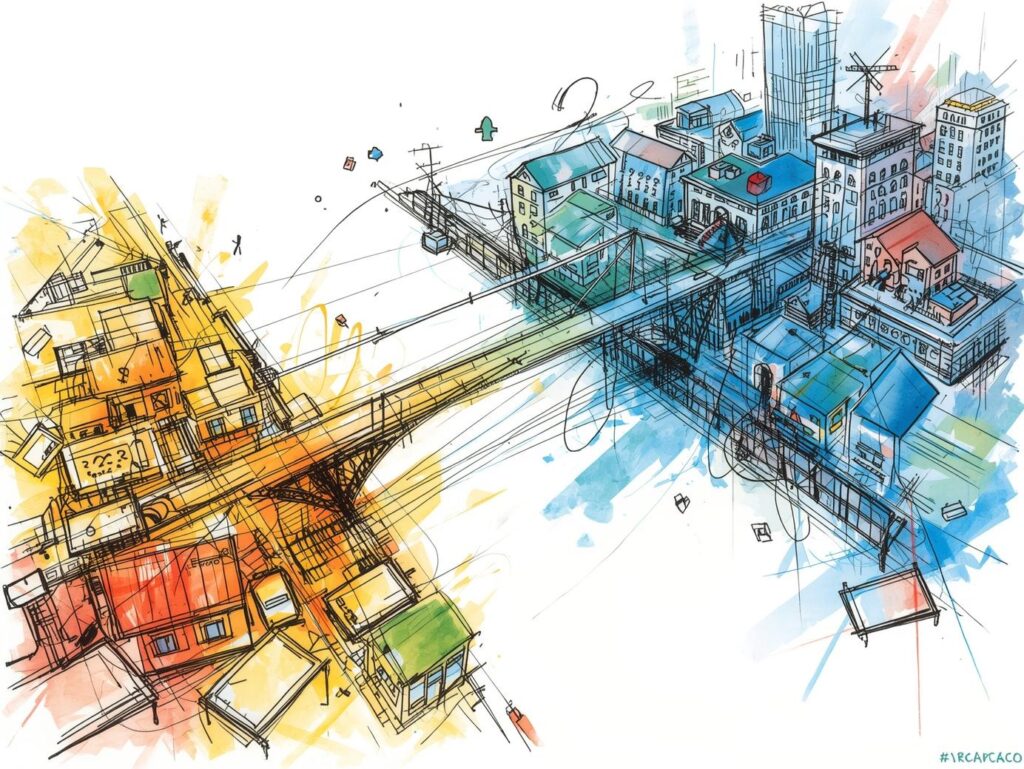Introduction
In today’s world, digital connectivity is a basic need. Access to the internet, digital tools, and information technologies determines not only how people communicate but also how they learn, work, receive healthcare, and participate in society. However, a persistent digital divide continues to affect rural and urban-marginal areas, leaving millions excluded from the opportunities of the digital age.
For countries like Peru, where geographic and socioeconomic inequalities are profound, promoting digital inclusion is not just a matter of technology—it is a matter of equity, justice, and human development. At CHUYA SONCCO, we understand that bridging this gap requires innovation, collaboration, and a strong commitment to empowering the most vulnerable populations.

Why Digital Inclusion Matters
1. Education and Learning Opportunities
- Without internet access, students in rural and marginal areas are deprived of online resources, digital classrooms, and distance education programs.
- Digital inclusion is education inclusion: it enables youth to develop the skills needed for the future.
2. Access to Healthcare
- Telemedicine, mobile health apps, and online health education can dramatically improve healthcare delivery in remote areas.
- Digital inclusion ensures that rural populations have equal access to life-saving information and services.
3. Economic Empowerment
- Digital tools open doors to remote work, e-commerce, and entrepreneurship.
- For marginalized communities, access to technology can mean new livelihoods and financial independence.
4. Civic Participation and Democracy
- Digital platforms allow citizens to participate in decision-making, access government services, and hold authorities accountable.
- Without inclusion, marginalized groups remain invisible in the digital public sphere.
Challenges to Digital Inclusion
1. Infrastructure Gaps
- Many rural areas still lack reliable internet connections, electricity, and basic technological infrastructure.
- Geographic isolation increases the cost of connectivity projects.
2. Economic Barriers
- Even where internet is available, many families cannot afford devices, data plans, or digital training.
3. Digital Literacy
- Access alone is not enough. Without training, people may lack the skills to navigate online platforms, protect their privacy, or use digital tools productively.
4. Cultural and Social Barriers
- Marginalized communities may face language barriers, gender gaps, and cultural resistance to adopting technology.
Lessons from Global Experiences
India: Digital Villages Program
- Government initiatives provide free Wi-Fi, digital banking, and e-learning to remote communities.
Kenya: Mobile Banking and Inclusion
- Platforms like M-Pesa revolutionized access to financial services for underserved populations.
Colombia: Vive Digital Strategy
- Focused on connecting rural schools, training teachers, and offering affordable internet access.
Peru: Ongoing Efforts
- Satellite internet projects and community telecenters are slowly expanding access, but inequalities persist.
The Role of CHUYA SONCCO
As part of its mission, CHUYA SONCCO is committed to advancing digital inclusion through:
- Community Connectivity Projects: Installing community internet centers and working with partners to expand rural broadband.
- Digital Literacy Programs: Offering workshops on basic computer skills, internet use, and safe digital practices.
- Youth and Women Empowerment: Targeting vulnerable groups with tailored training in STEM, entrepreneurship, and e-learning.
- Health and Education Integration: Leveraging digital tools to strengthen telemedicine, e-learning, and distance mentoring.
- Alliances for Impact: Building partnerships with universities, governments, and technology companies to scale digital inclusion initiatives.
Towards an Inclusive Digital Society
Digital inclusion is not just about connecting people to the internet—it is about connecting people to opportunities. It is about ensuring that children in rural schools have the same chances as those in urban private institutions, that women in marginalized neighborhoods can access online education, and that communities can harness technology for sustainable development.
By closing the digital gap, we can unlock human potential, reduce inequalities, and create a society where no one is left behind.
Conclusion
Digital inclusion is one of the most urgent challenges of the 21st century. In rural and urban-marginal areas, the lack of access to digital tools perpetuates cycles of poverty and exclusion. But with innovation, commitment, and collaboration, it is possible to bridge the divide.
For CHUYA SONCCO, digital inclusion is not only a program—it is a vision of justice and empowerment. By bringing technology to those who need it most, we are building a future where every individual has the tools, skills, and opportunities to thrive in the digital era.





